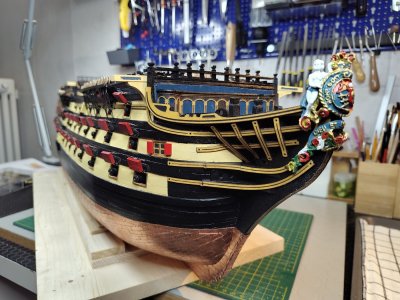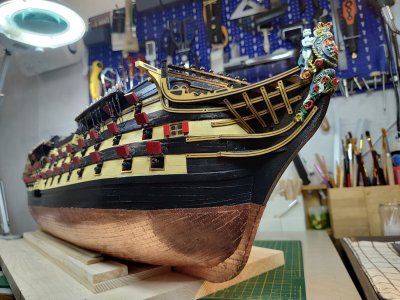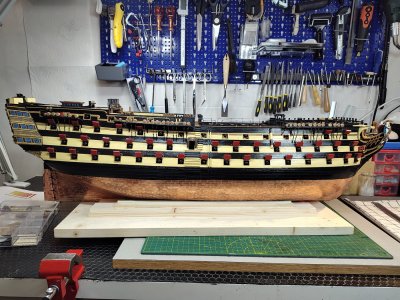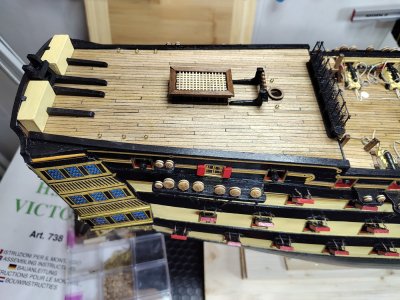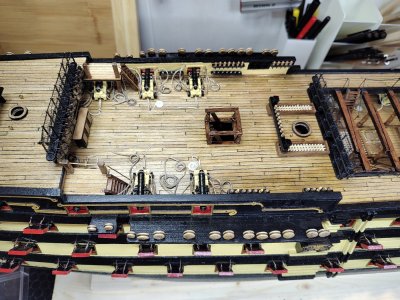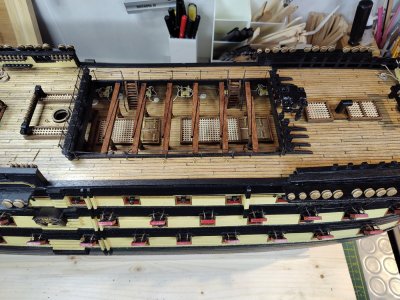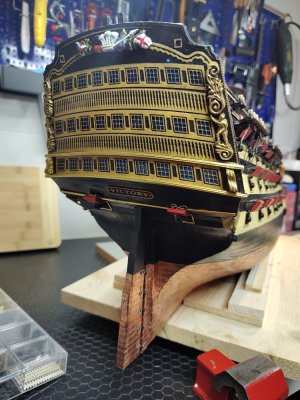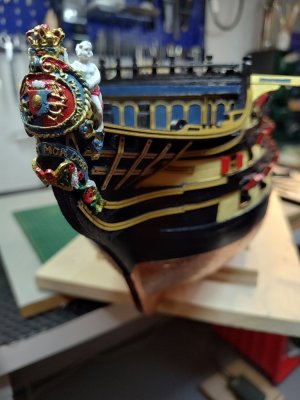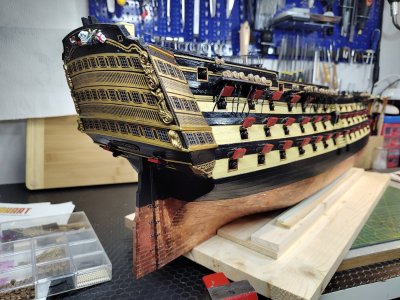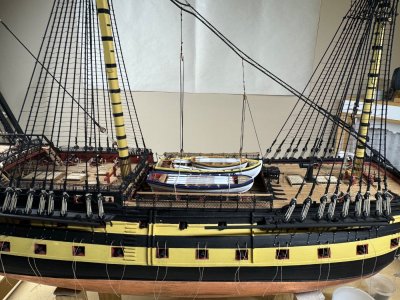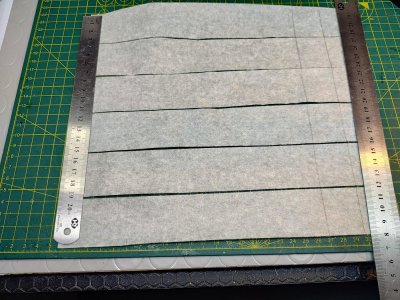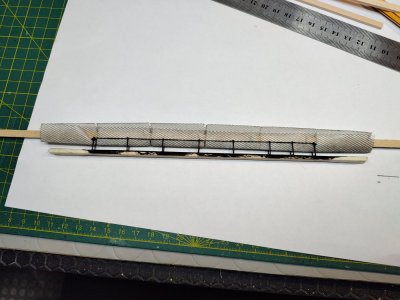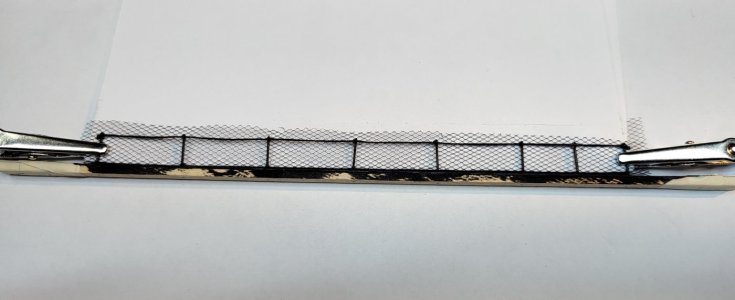For the future, the running out rigging and train rigging lines were typically only 2 inches to 2.5 inches in circumference. The ones in the photos look to be the same size as the breeching which was 4.5 inches in circumference for 6 pounders up to 7.5 inches in circumference for 32 pounders. The running out and training tackle were rigged with blocks and hooks rather than thimbles. I found the dimensions in several places and it varied a little for each and for different eras. The chart below should be close. I am pretty sure the math is accurate but if someone would check it to be sure I would be grateful.
Allan
Sorry the pdf did not save the excel sheet blocks exactly. Also attached is a photo that shows what I included in the chart.

Allan
Sorry the pdf did not save the excel sheet blocks exactly. Also attached is a photo that shows what I included in the chart.

[/td]
Attachments
Last edited:




